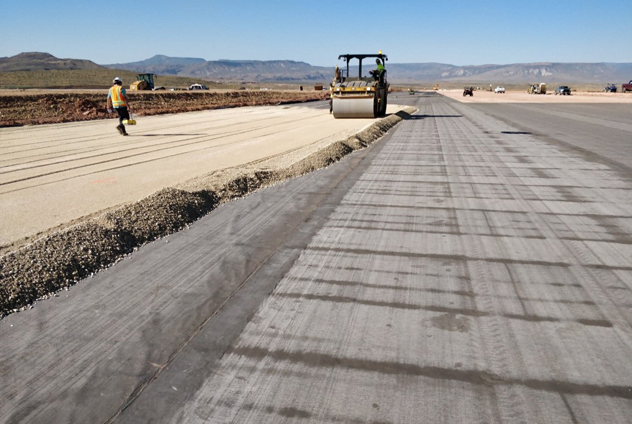
- Area: 335,000 m2
- Location: St. George Regional Airport (USA)
- Date: June 2019
When St. George Regional Airport opened in 2011, the runway was projected to last at least 20 years. It only lasted 8 years. The area is known for the blue clay in its soil. This clay displaced the airport’s runway making it impossible for aircraft to use.
Many companies participated in digging and rebuilding the runway’s 1,646 metres. They dug a trench 5.20 metres deep and 30 metres wide to remove clay and other loose material. They then filled the trench with soil and Coletanche geomembrane.



The site manager asked Coletanche train his local workforce on how to install the membrane on site.
The airport runway needed to be passable during heavy rains. The teams wanted the hardest membrane on the market so it could withstand the 140°C temperature during top layer gravel and asphalt installation. Finally, the membrane had to be waterproof and withstand traffic during installation without any effect on its physical and mechanical properties. It also needed to withstand high temperature variations and be highly puncture resistant.
Coletanche meets each of these requirements. This geomembrane is manufactured by impregnating a non-woven, needlepunched, long-fibre geotextile and a surfacing mat with a bitumen compound at a temperature of approximately 180°C. Coletanche membranes have a composite structure with many advantages, including a high resistance to puncture by aggregates without additional protection thanks to its reinforced geotextile.




